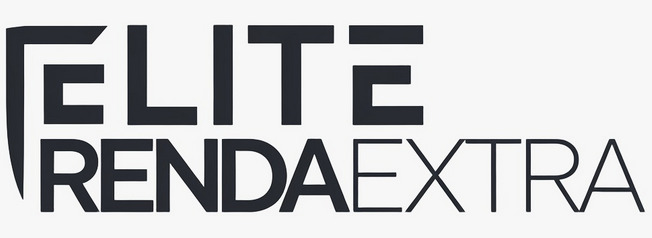Navigating the world of personal finance in the United States can sometimes feel complex, especially when considering borrowing options. Personal loans offer a flexible way to access funds for various needs, from consolidating debt to covering unexpected expenses or financing a significant purchase.
Understanding how to approach the application process is the first step towards potentially securing the funds you need responsibly. This involves knowing what lenders look for, what information you’ll need to provide, and how to compare different offers effectively to find a solution that aligns with your financial situation.
What Exactly is a Personal Loan?
A personal loan is a type of installment loan, meaning you borrow a fixed amount of money and repay it, plus interest, in regular monthly payments over a predetermined period (the loan term). Unlike secured loans, such as mortgages (backed by your house) or auto loans (backed by your vehicle), most personal loans are unsecured. This means they don’t require collateral.
Because they aren’t backed by an asset, lenders rely heavily on your creditworthiness – your history of managing debt – to decide whether to approve your application and determine your interest rate. Funds from a personal loan can typically be used for almost any purpose, making them versatile. Common uses in the US include:
- Debt Consolidation: Combining multiple high-interest debts (like credit cards) into a single loan, potentially with a lower interest rate.
- Home Improvements: Financing renovations or repairs without tapping into home equity.
- Major Purchases: Covering costs for things like appliances, electronics, or even a wedding.
- Medical Expenses: Paying for procedures or bills not fully covered by insurance.
- Emergency Situations: Handling unexpected costs like car repairs or job loss.
- Moving Expenses: Covering the costs associated with relocating.
It’s important to differentiate personal loans from payday loans or title loans, which often come with extremely high interest rates and short repayment terms, potentially trapping borrowers in cycles of debt.
Before You Apply: Preparation is Key
Jumping straight into applications without preparation can be counterproductive. Taking time to assess your situation and gather necessary information will streamline the process and improve your chances of finding a suitable loan.
Assess Your Actual Need
First, honestly evaluate why you need the loan and the exact amount required. Is a personal loan the most appropriate solution? Could you save up for the expense instead, or explore other options like a 0% APR credit card promotion (if you can repay it quickly)? Borrowing should be a well-considered decision, not an impulse.
Check Your Credit Score and Report
Your credit score is a crucial factor in the personal loan application process in the United States. Lenders use it to gauge your credit risk. Higher scores generally qualify for lower interest rates and better loan terms. You are entitled to a free copy of your credit report annually from each of the three major credit bureaus (Equifax, Experian, TransUnion) via AnnualCreditReport.com.
Review your reports carefully for any errors that could be negatively impacting your score and dispute them if necessary. Knowing your score beforehand gives you an idea of what types of loans and rates you might realistically qualify for.
Determine How Much You Can Afford to Borrow
Look at your monthly budget. How much can you realistically afford to allocate towards a new loan payment each month without straining your finances? Consider your income, existing debts, and regular expenses. Lenders will calculate your debt-to-income ratio (DTI) – your total monthly debt payments divided by your gross monthly income. A lower DTI generally improves your approval odds.
Gather Necessary Documents
Having your documentation ready will speed up the application process. While specific requirements vary by lender, you’ll typically need:
- Proof of Identity: Government-issued ID like a driver’s license, passport, or state ID.
- Proof of Address: Utility bill, lease agreement, or bank statement showing your current address.
- Proof of Income: Recent pay stubs, W-2 forms, tax returns (especially if self-employed), or bank statements.
- Employment Verification: Your employer’s contact information may be requested.
- Social Security Number (SSN): Used for identity verification and credit checks.
Understanding Key Loan Terms
Familiarize yourself with the terminology used in loan offers to make informed comparisons.
Interest Rates (APR)
The interest rate is the cost of borrowing money, expressed as a percentage. Pay close attention to the Annual Percentage Rate (APR). The APR includes the interest rate *plus* certain fees associated with the loan (like origination fees), giving you a more accurate picture of the total annual cost. Personal loans can have fixed interest rates (stay the same for the life of the loan) or variable interest rates (can fluctuate based on market conditions). Fixed rates offer predictable payments, which most borrowers prefer.
Loan Amount and Term Length
The loan amount is the principal sum you borrow. The term length is the time you have to repay it (e.g., 36, 48, 60 months). A longer term usually means lower monthly payments, but you’ll likely pay more in total interest over the life of the loan. Conversely, a shorter term means higher monthly payments but less total interest paid.
Fees
Be aware of potential fees, which can add to the overall cost:
- Origination Fee: A fee charged by some lenders for processing the loan, often deducted from the loan proceeds.
- Prepayment Penalty: A fee charged if you pay off the loan early (less common now, but always check).
- Late Payment Fee: A fee charged if you miss a payment deadline.
- Insufficient Funds (NSF) Fee: Charged if a scheduled payment bounces due to lack of funds in your account.
Types of Lenders Offering Personal Loans in the US
You have several options when looking for a personal loan:
Banks
Traditional brick-and-mortar banks (like Chase, Bank of America, Wells Fargo) often offer personal loans, especially to existing customers with good credit. They provide face-to-face service but may have stricter eligibility requirements and potentially slower processing times compared to online lenders.
Credit Unions
Credit unions are non-profit, member-owned financial institutions. They often offer competitive interest rates and more personalized service than large banks. You typically need to become a member to apply, which usually involves meeting certain criteria (e.g., living in a specific area, working for a particular employer). They can sometimes be more flexible with borrowers who have less-than-perfect credit.
Online Lenders (Fintech)
Companies operating entirely online (like SoFi, LendingClub, Prosper, Upgrade) have become increasingly popular. They often offer a streamlined application process, quick funding decisions (sometimes within the same day), and competitive rates, especially for borrowers with strong credit. Their overhead is lower, which can translate into better terms. They cater to a wide range of credit profiles.
The Application Process Step-by-Step
Here’s a general overview of the steps involved when you apply for a personal loan:
1. Shopping Around and Comparing Offers
Don’t accept the first offer you see. Compare options from multiple lenders (banks, credit unions, online lenders). Many online lenders offer pre-qualification. This process uses a soft credit inquiry (which doesn’t hurt your credit score) to estimate the loan amount and interest rate you might qualify for based on basic financial information. Pre-qualifying with several lenders helps you identify the most favorable potential terms before submitting a formal application.
2. Submitting the Formal Application
Once you’ve chosen a lender, you’ll complete their formal application. This involves providing detailed personal and financial information, including the documents you gathered earlier. Be thorough and accurate, as discrepancies can cause delays or denial. This stage typically involves a hard credit inquiry, which can slightly lower your credit score temporarily.
3. Verification and Underwriting
The lender will review your application, verify your information (identity, income, employment), and assess your creditworthiness through a process called underwriting. They’ll analyze your credit report, DTI ratio, and other factors to determine your risk level and finalize the loan terms if approved.
4. Loan Approval and Disbursement
If your application is approved, the lender will present you with a final loan agreement outlining the amount, APR, term, monthly payment, and all fees. Review this document carefully. If you accept the terms, you’ll sign the agreement electronically or physically. The lender will then disburse the funds, typically via direct deposit into your bank account, which can happen within a few business days, or sometimes even sooner with online lenders.
Factors Influencing Loan Approval
Several elements play a role in a lender’s decision:
Credit History and Score
This is often the most significant factor. A strong history of responsible credit use and a good-to-excellent credit score significantly increase your chances of approval and securing a low interest rate.
Income and Employment Stability
Lenders need assurance that you have a stable source of income sufficient to cover the loan payments. They’ll verify your employment status and income level.
Debt-to-Income Ratio (DTI)
As mentioned, lenders prefer borrowers with a lower DTI ratio, as it indicates you aren’t overextended financially and can likely handle additional debt.
Loan Amount and Purpose
Requesting a very large amount relative to your income might raise concerns. While most personal loans allow broad use, some lenders might inquire about the loan’s purpose during underwriting.
After You Receive the Loan
Securing the loan is just the beginning; responsible management is crucial.
Managing Your Loan Payments
Make all payments on time, every time. Late payments incur fees and negatively impact your credit score. Setting up automatic payments (autopay) from your bank account can help ensure you never miss a due date.
Understanding the Repayment Schedule
Keep track of your repayment schedule, remaining balance, and the total interest you’ll pay over the loan’s term. Knowing these details helps you stay in control of your debt.
Applying for a personal loan in the United States is a process that benefits greatly from careful preparation and understanding. By assessing your needs, checking your credit, gathering documents, comparing offers diligently, and understanding the terms, you position yourself to make an informed financial decision. Remember that taking on debt is a significant commitment, so borrowing responsibly is essential for maintaining long-term financial health.



